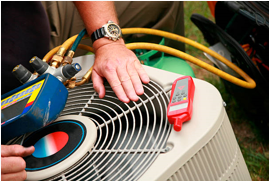Even if you live in an area with mild winters, it can still feel mightily cold if you don’t have reliable heating. So, if you want to remain comfortable throughout the year, you need to know that your heating system can cope with the demands of even the coldest days. So, is this year time to replace your heating?
Signs You Need a Heating Upgrade:
Most of us are reluctant to upgrade something as potentially costly as our HVAC systems. We imagine that our heating can last a lifetime, but this is not the case. Even the most robust and well manufactured heating system will have a lifespan of 15 to 20 years. When your system is getting older, it may present you with signs that it is getting time for an upgrade. These signs can include inconsistent heating, cold spots, increasing energy bills and frequent repair issues. While you may not want to pay the initial cost of an upgrade, you may find that it pays for itself in improved efficiency and more reliable performance.
Choosing a New Heater:
If you have had your heater in place for many years, you may not be aware of the fantastic new options on the market. While this range of choice is great, it can make choosing a new heater a little daunting. The furnace is a standard standby, and it can allow you to simply swap out your old unit with a better model. Unfortunately, your purchase decision is not that simple. You will still need to choose whether you want an electric or natural gas furnace, and choose the correct size of unit.
Look at Efficiency Ratings:
While you may not use your heating system as much as your air conditioner in the summer, it is still important that you choose an efficient option. This will ensure that the least amount of energy as possible is wasted, reducing your heating costs while keeping you warm and cozy on even the coldest nights. Furnaces are assigned an energy efficiency rating that you will need to consider to choose the best model for your home. Gas furnaces feature an AFUE rating. This stands for Annual Fuel Utilization Efficiency, and it is represented as a percentage on packaging and promotional materials. In simple terms, the AFUE percentage refers to the fuel used by the heating system to keep your home warm. The higher the percentage, the less waste. For example, if a model has an AFUE rate of 90 percent, it means that 90 percent of the fuel is used for heating and 10 percent is wasted. This wasted amount is vented outside your home through the chimney, so you are paying for nothing at all. The most efficient models on the market have an AFUE rating of 98 percent, which means that very little fuel is wasted and almost every cent of your heating dollars goes into keeping your home warm.
Consider Combining Your Heating and Cooling:
If you are upgrading your heating system, it may be worth considering combining your heating and cooling systems. There are numerous forced air systems that are capable of heating and cooling your home. These types of systems use heat pumps and are suitable for mild winter climates. The existing heat is used to warm interior areas, making an efficient heating solution. This process can also be reversed to provide cooling in the summer. If you are interested in combining your heating and cooling, discuss it with your HVAC technician.
